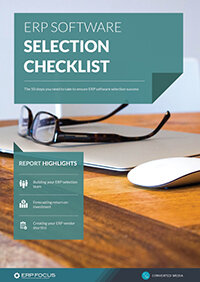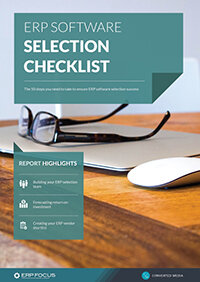4 ways ERP can improve data analysis
The effort required to grow enterprise revenue is getting greater every day, and this assertion is not only based on a turbulent global economy, but also on the sheer volume of commercial largess created by a virtually universal marketplace. Consequently, many of us face an interesting revenue conundrum in the form of ‘more opportunities that can be handled on an average day’.
As one of the predominant enterprise technologies, ERP systems can identify problems, manage solutions, and report on the final results associated with enterprise opportunities. Here are four ways in which ERP data analysis can help you identify and execute on the opportunities that matter most.
1. Standardization
To paraphrase an affirmation typically utilized by English nobility upon the death of one monarch and a successor; “The Data is dead, Long live the Data.” While my convention may be a bit of a stretch on first blush, the original 1272 phrase was first used in order to insure a ‘standardized’ rite of passage, thereby mitigating any potential of Civil War. After all, what typically causes wars; ‘non-standardized information’ of course.
“The Data is dead, Long live the Data.”
Nevertheless, given the depth and width of today’s enterprise data, the point becomes more obvious, since today’s ERP systems can’t leverage disparate databases operating different data elements in real-time, otherwise, they just end up being random records that mean nothing. ERP can however, force the issue by driving standardized data and resultant information up and down an entire enterprise-chain, sort of like avoiding Civil war, only at the digital level.
2. Faster business processes
As I have written in the past, ‘Speed is Life’ and the difference between a sale and a missed sale, has become a matter of nanoseconds not minutes these days. ERP data analysis is able to rapidly identify, trap, validate and pass relevant data points throughout an entire supply and sales chain. This allows ERP users to become more prescient than competitors, and allows for enormous increases in overall revenue efficiency over time.
3. Synchronized datasets
As suggested above, today’s enterprise economic environment is globally relevant and highly decentralized. Consequently, you cannot manage large enterprises unless a headquarters in Irvine California, knows what the manufacturing plant in Delhi is doing in real-time. In this case, non-centric or spread ERP data analysis allow intercontinental operations to exist in parallel, using the same data points, across the same digital fabric.
4. Globally relevant reporting
In the same way that synchronized datasets exist in order to provide enterprise value, extended and decentralized reporting offers the same premium. In this case, today’s highly-flexible and easily customized ERP platforms make departmental, divisional and consolidated enterprise reporting so much simpler than previous mechanisms, whether they were digital or not.
Free white paper

60-Step ERP Selection Checklist
Get the comprehensive checklist for your ERP selection project

Related articles
-

ERP migration steps (your ERP migration checklist)
How to construct the smoothest ERP migration plan possible
-

CMMC Compliance: What Aerospace and Defense Manufacturers Need to Know
Key insights on CMMC compliance, deadlines, and securing DoD contracts with CMMC 2.0 certificatio...
-

4 practical examples of the power of real-time ERP data
Discover the potential of real-time data with these practical examples from a range of industries.

